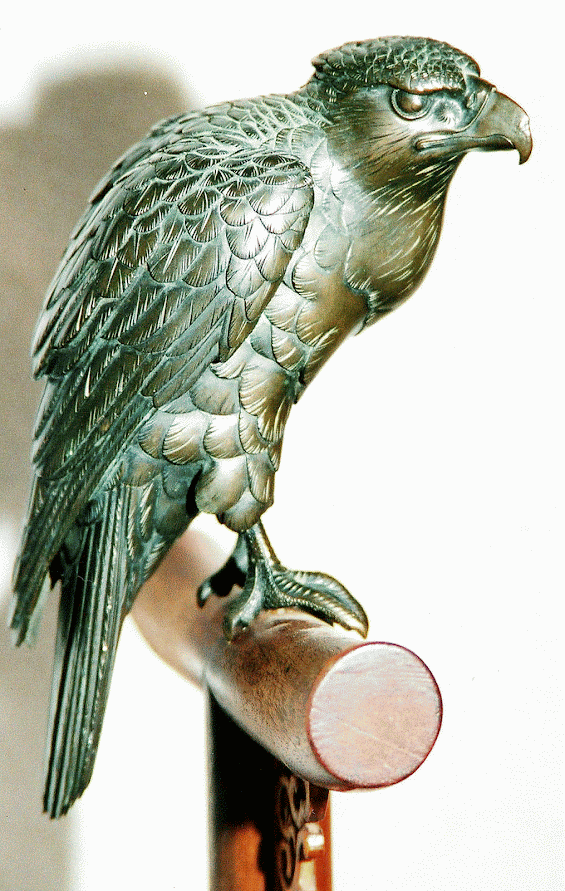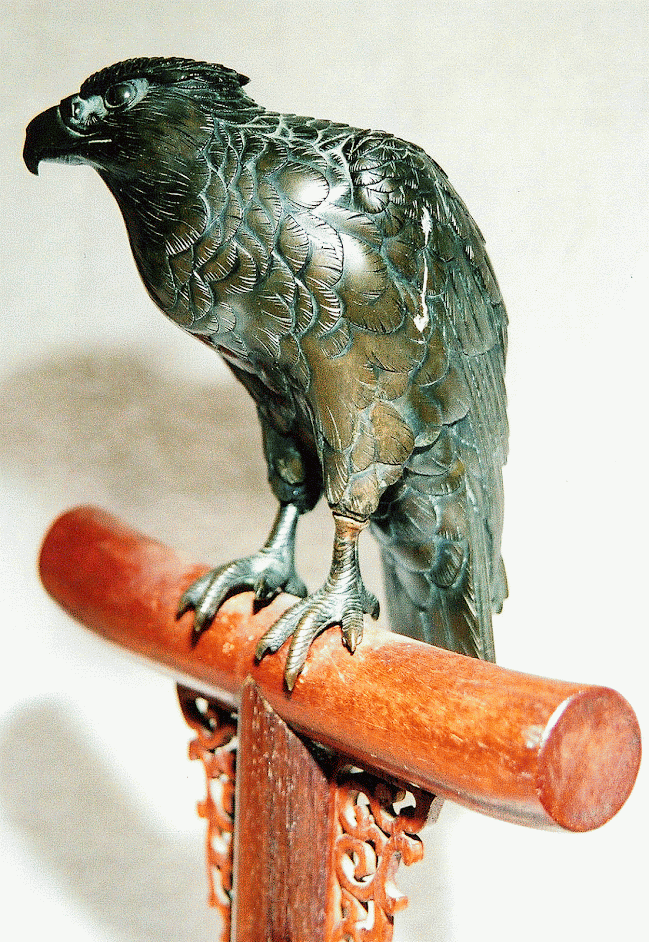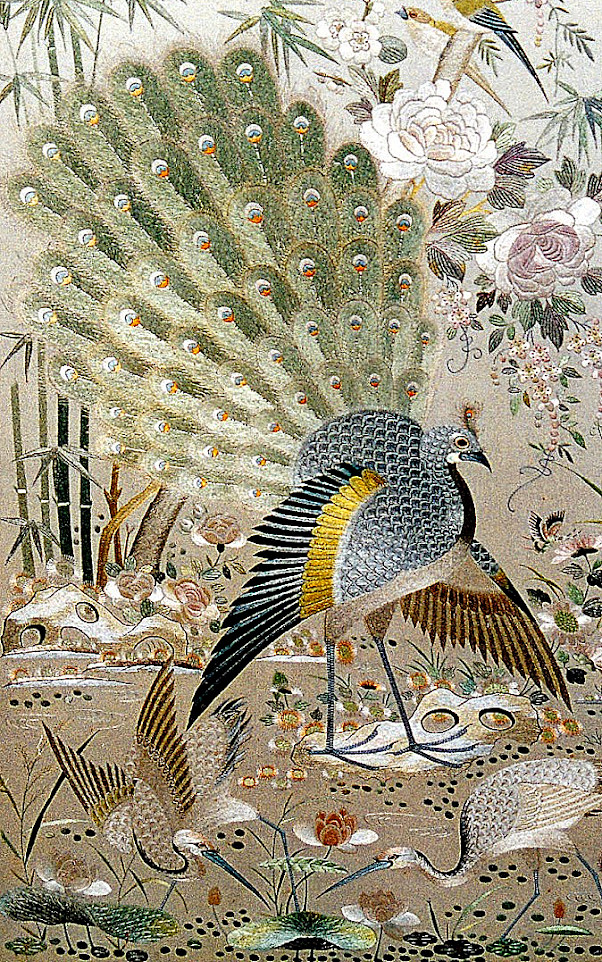
The future of
Kinloch Castle remains uncertain placing its contents at risk of
dispersal or loss.
Constructed for
George Bullough, later Sir George, Baronet, between 1897 and 1900
this late Victorian Highland hunting lodge on the Isle of Rum, is
located just south of the Isle of Skye, off Scotland’s west coast.
The castle
remains fully furnished as a rare, possibly unique time capsule of the period and
contains a magnificent collection of artistic treasures acquired during
Bullough’s three
year-long world tour.
For almost seventy years, since
acquisition in 1957
by the British Conservative Government
of the day, no appropriate
body has been appointed,
or sought, to care for the red sandstone building
or its remarkable collection of artifacts.
The purpose of
my Blog is to record, highlight and describe these amazing
treasures in the interests
of education and enjoyment in the hope that public awareness and concern will
stimulate government to urgently address and ensure proper care and
funding of this unique building and its contents in situ for
generations to come.
Please read notes at end of this post,THANK YOU!
*****************************









JAPANESE THREE-FOLD EMBROIDERED SCREEN
George W.
Randall Archive ©
A glazed Japanese
three-fold finely embroidered silk screen each
panel68 inches (173 cms.) by 25½ inches
(65 cms.) within a carved
wood mount of Prunus speciosa, the Oshima Cherry,
depicting numerous species of birds.
Above each a much smaller panel, encased in a
carved mount
of dragons, portraying birds, insects and flowers.
The central
panel was described as “detached” in the 1979 Inventory
and was
photographically recorded as such in 2012 - thirty-three years
later -
suffering brown staining along the bottom edge due to being stored directly on
a wooden parquet floor close to double French doors.
 |
Above each large panel is a much smaller panel,
encased in a carved mount of dragons, portraying birds, flowers and insects.
|


LEFT:
Reverse of missing panel depicting the peacock.
Secured
to a wooden frame the lower half has suffered from being stored directly
onto a parquet floor in high humidity.
RIGHT:
The missing panel is the middle of the three.
Amazingly, an offer to re-glaze and re-instate the
damaged panel was REFUSED by the Scottish Natural Heritage Reserve Manager at the time.
In reality SNH were, and it would seem still are totally indifferent to the castle's contents -
they are not nature!
BELOW:
Photography struggles to do justice
to this amazing work of silk embroidery.
>>>>>>>>>>>>>>>>>>>>>>> * <<<<<<<<<<<<<<<<<<<<<<<<
PAIR OF JAPANESE ONI WARRIORS
George W. Randall Archive ©
A pair of red
lacquer figures of Oni in full battledress carrying a barrel suspended from a
large kanabō (a knobbed wooden club) used as a weapon in Buddhist feudal Japan
to cripple the opponent rather than kill. Each figure holds a small kanabō in
his left hand. The visible end of the barrel has two partly open hinged doors
revealing four drawers. To each side of the barrel is a double tassel suspended
from a hook. Small pegs on the feet of the figures secure them to their
ornately carved cinnabar and lacquer base which bears the gold coloured Trade
Mark of Kuhn & Komor, Yokohama and Hong Kong.
 |
The Oni Warriors as they should be.
The image above was published in “Scotland’s Magazine” in December 1959,
thirty-four months after purchase of the 26,400 acre island and Kinloch Castle
by the Conservative Government of the day. Despite being recognised
as a fully furnished time capsule of the late Victorian/Edwardian Era
subsequent use of the building as a hotel in the late 1980’s to 1994,
allowed guests complete freedom to roam resulting in wear and tear plus
inevitable damage to a number of contents, including the Oni.
|
 |
| As the Warriors are today. |
The image to the above was published in “Scotland’s Magazine” in December
1959, thirty-four months after purchase of the 26,400 acre island and Kinloch
Castle by the Conservative Government of the day. Despite being recognised as a
fully furnished time capsule of the late Victorian/Edwardian Era subsequent use
of the building as a hotel in the late 1980’s to 1994, allowed guests complete
freedom to roam resulting in wear and tear plus inevitable damage to
a number of contents, including the Oni.
 Photographed in August 1997 resting against a
window in the former Butler’s Pantry the figures were minus their base,
kanabō and barrel. Fortunately all but the tasseled barrel were subsequently
found and the partly restored item displayed in the Castle Library.
___________________________
Photographed in August 1997 resting against a
window in the former Butler’s Pantry the figures were minus their base,
kanabō and barrel. Fortunately all but the tasseled barrel were subsequently
found and the partly restored item displayed in the Castle Library.
___________________________
LEFT: The interior of Kuhn & Komor's 37 Water
Street, Yokahama shop. Of particular note is the large Cloisonné Vase to the right, very similar, but not one to the pair purchased by George Bullough and displayed on the Great Hall Gallery at Kinloch Castle.

Kuhn and Komor was a Japanese curio business established by Isidor Komor and his cousin Arthur Kuhn in 1897, their China premises being opened the following year in the Palace Hotel, Shanghai, followed by stores in Hong Kong, Kobe and Singapore.
> > > > > > > > > > > > > > > > * < < < < < < < < < < < < < < < <
INDIAN EMBOSSED BRASS CIRCULAR TABLE TOP
Pair Oak Triangular Chairs
An Indian embossed brass 32 inch diameter coffee table with panels of figures and animals on six legged folding traditional turned wood stand.
Also professionally described as “a large Indo-Persian table.”
During his world tour visit to India George Bullough visited a brass-ware workshop.
BELOW: Brass table in Great Hall - July 2002.

Note:
Pair oak corner arm chairs with
turnball spindle backs, legs and stretchers, triangular
shaped seats covered in printed chenille velvet by
James Shoolbred & Co, London.
(Photographed July 1996.)
 |
| November 2006. |
******************************
Photographed October 2005.
A large Japanese lacquer double-sided screen professionally
described as being of “the finest quality” onlaid with
ivory, mother of pearl and wood.
Overall size: 50 x 88 inches (120 x 213 cms.)
The Obverse depicts two Samurai warriors under the bough of
a pine tree on a blue background,
one fleeing with broken sword, the other clutching part of
his opponents ripped tunic.
Signed.


The Reverse in coloured ivory of two characteurs with prunus and two finches
on pine tree branch, on a black background.
The whole on an elaborately carved wood stand with peony, ho-ho, lotus and lingzhi.
Signed.
*********************************
 JAPANESE DISPLAY CABINET
JAPANESE DISPLAY CABINET
A magnificent intricately carved Japanese hardwood display
cabinet on a carved stand with square legs, measuring 36 x 70 inches (89
x 173 cms.) comprising a number of staged shelves, drawers and
cupboards with black lacquer door panels painted with scenes of Mount
Fuji, lakes and gardens in black and white.
Photographed March 2006

**************************************
JAPANESE RED LACQUER DISPLAY CABINET
on scroll legs with cloisonné panels depicting Mount
Fuji, birds and prunus.
36 x 68 inches (88 x 167 cms.)
Displayed along the Ground Floor South Corridor.
 |
| October 2002 |
 |
March 2006.
Detail October 2002 photograph.
The right-hand scroll appears already detached and just lying on top of the cabinet. |
 |
Detail March 2006 photograph.
Note the matching left and right scrolls in the image taken in October 2002,
and the missing right hand scroll in the March 2006 picture.
|
LEFT: October 2002
RIGHT: March 2006
 |
| Mount Fuji Prunus |
***********************************************
 INDIAN BRONZED METAL POT
AND COVER
INDIAN BRONZED METAL POT
AND COVER
ON JAPANESE JARDINIERRE STAND
(Displayed on first floor south corridor.)
During his three year-long world tour, (1892-1895), George Bullough visited much of India, including Darjeeling and the foothills of the Himalayas, India’s North-West Territories and Khyber Pass.
Described as originating in Kashmir,
this oviform pot is decorated with incised
foliate in blue and red.
Height 15 inches. (36 cms.)
The pot is displayed on a Japanese carved walnut square jardinierre stand, the square top above a finely worked mask apron,
with two under-shelves on carved griffon cabriole legs with paw feet.
Height: 40 inches (98 cms.)
********************************
Japanese Embroidered Wall Hanging
with dragon and utensil design. 46 x 70 inches (113 x 172 cms.)
Displayed along the First Floor South Corridor.
Playing polo.






















































































































